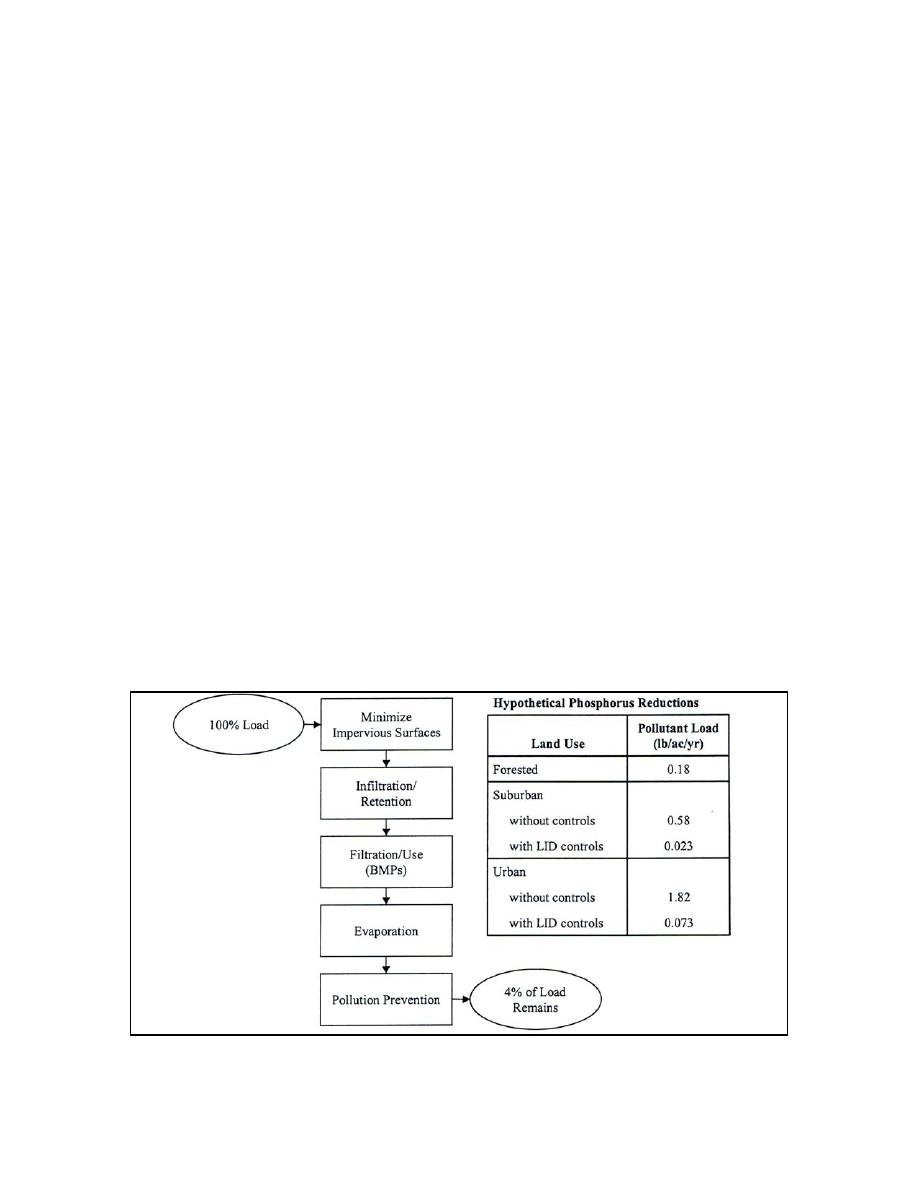
UFC 3-210-10
25 October 2004
the water and into the soil, but also make these nutrients available to the plants to form
plant tissue.
6-2.2
Treatment Train Approach to Water Quality. Following a typical flow path
beginning where runoff is generated from an impervious area, runoff water quality
control can be implemented in the following steps:
1. Minimization. Design the site to treat pollutants effectively in small
quantities, rather than allow larger quantities of runoff to accumulate
before treatment.
2. Natural Filtration. Use the physical, chemical and biological processes of
vegetation and soils to filter pollutants.
3. Constructed Filtration. Use the physical, chemical and biological
processes of distributed micro-scale systems to filter pollutants.
4. Evaporation. Store and evaporate water in shallow depressions so that
particulates can be removed.
5. Pollution prevention. Incorporate management practices such as restricted
fertilizer use and diligent street sweeping to reduce pollutant loads. (Note
that while the first four steps above pertain to site features, this final step
pertains to post-construction maintenance).
Figure 6-1 shows a typical treatment train process for phosphorus removal.
Figure 6-1. Treatment Train Process for Phosphorus Removal
Source: Adapted from PGDER.
34



 Previous Page
Previous Page
